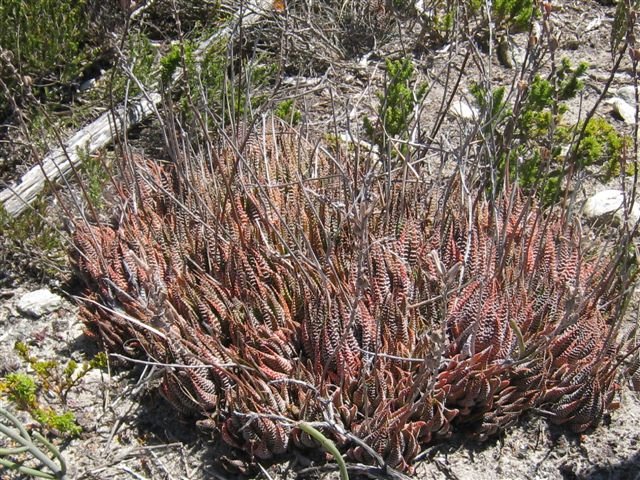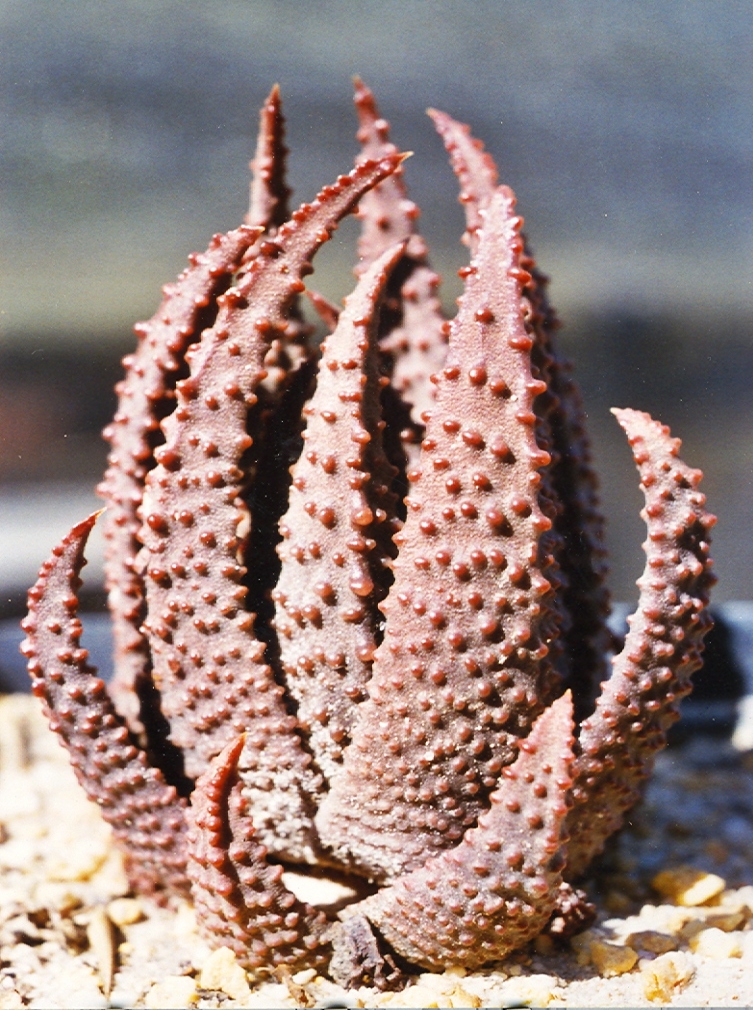A series of Facebook postings from April & May 2022 covering Tulista kingiana, T. marginata, T. minima (minor), T. pumila.
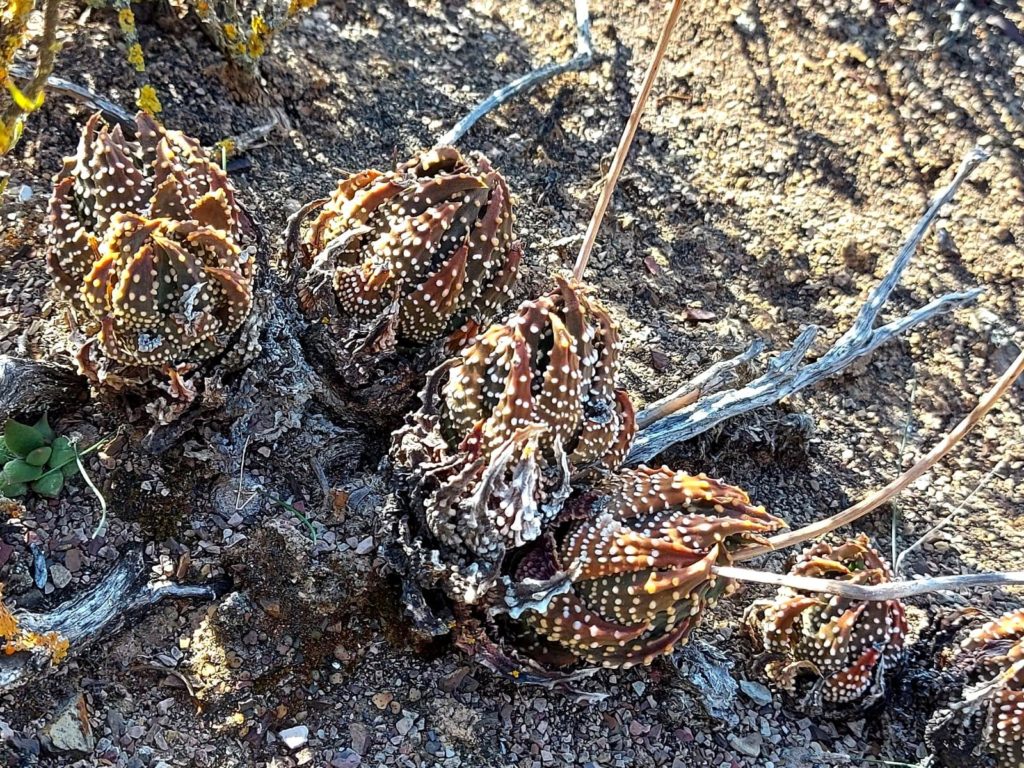
Warwick sent me this great picture of Tulista pumila taken between Worcester and Robertson. It would be interesting to know how long-lived individual plants are because this species can form an expanding ring of offsets much like Aloe claviflora does.
Nuisance – prempting Warwick’s post was a disaster. This is what Shucked should be about. A celebration of nature and what she has for us. We are in a mess because we have no respect for nature or for its many life forms. If it moves we shoot and kill. If it grows we chop it out or down and make charcoal, choke medical properties out of it to cure the many ailments we get due to maltreatment of other life forms? Do we collect and propagate Haworthia for the sheer joy of nature or because we get some sort of commercial or ego-soothing benefit? Lets share thoughts about and to grow the positives?
I wonder of Facebook will handle this but after the ageing question looked at this population that I specifically imagined rings to be associated. Not much joy from that except to get an idea of pupping frequency. I enjoyed seeing these pictures again and will post all my Tulista. This lot are the famous Lemoenpoort variant – check that glabrous one!
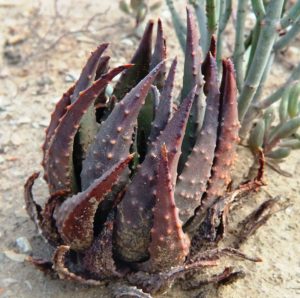
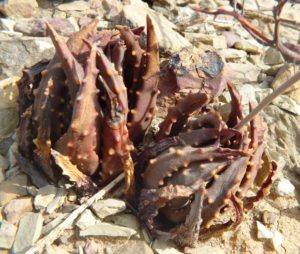
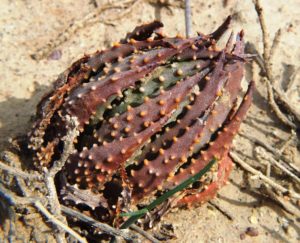
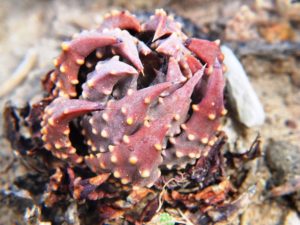
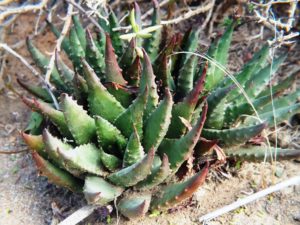
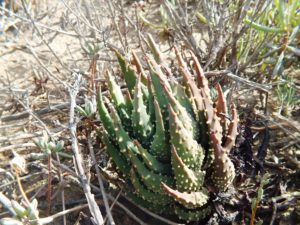
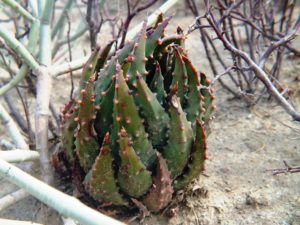
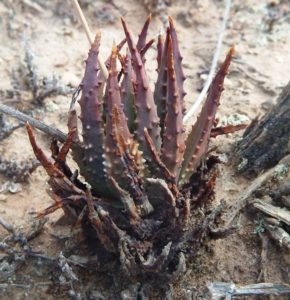
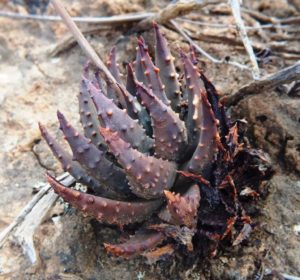
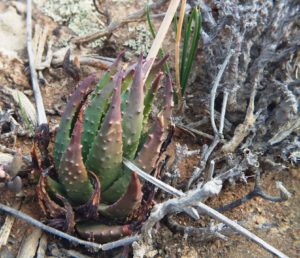
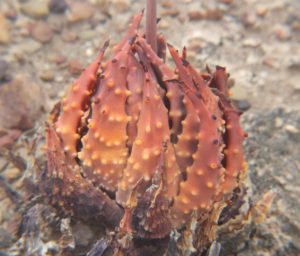

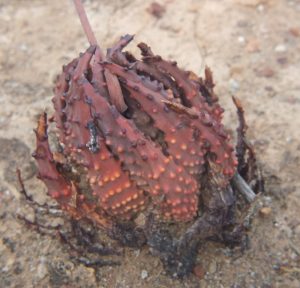

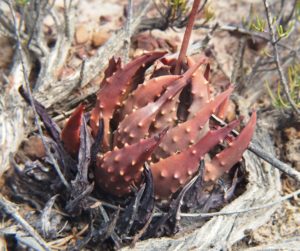
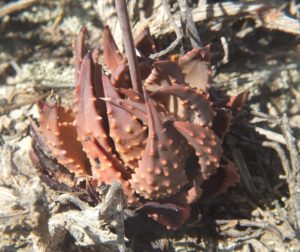
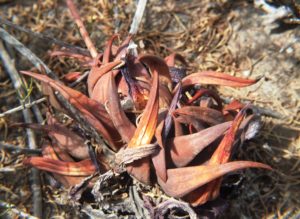
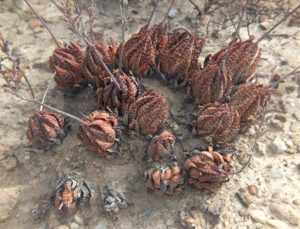
No nice pictures here but this is at Mowers (an abandoned railway gangers cottage). Road construction between Worcester and Robertson led to destruction of part of a large population of T. pumila. For some incomprehensible reason these plants have been burdened with a species name. It is difficult even to say it is a discrete population because walking either to Worcester or Robertson, or even north or south, you will find plants for many miles. It would be a flip of a coin to say they were the same or different.


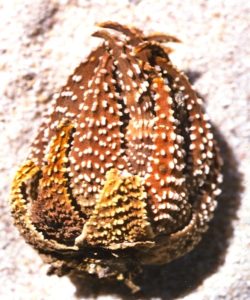
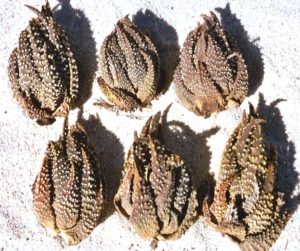
Some greenish plants on old river gravel and across the valley on high shales all shades of chocolate in abundance. How I regret not filling my camera with those incredible plants if pictures can ever do justice to them.
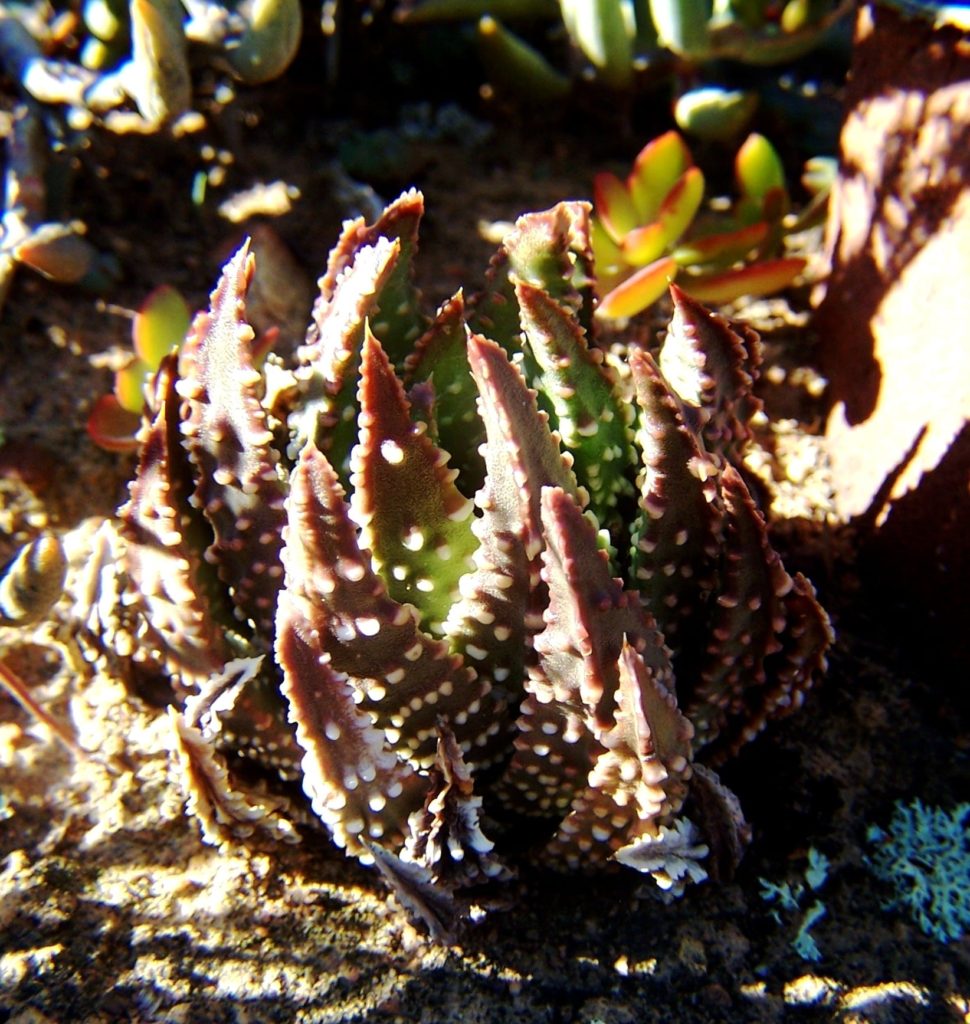
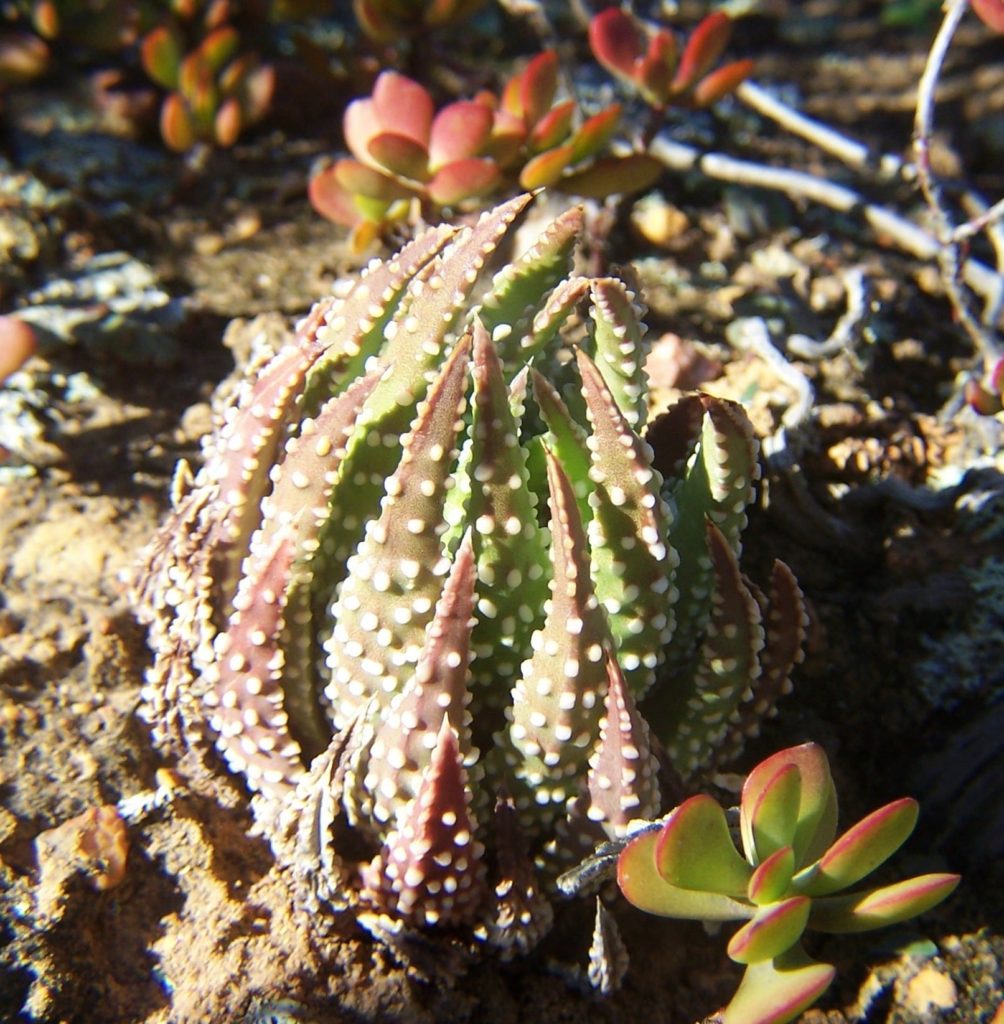
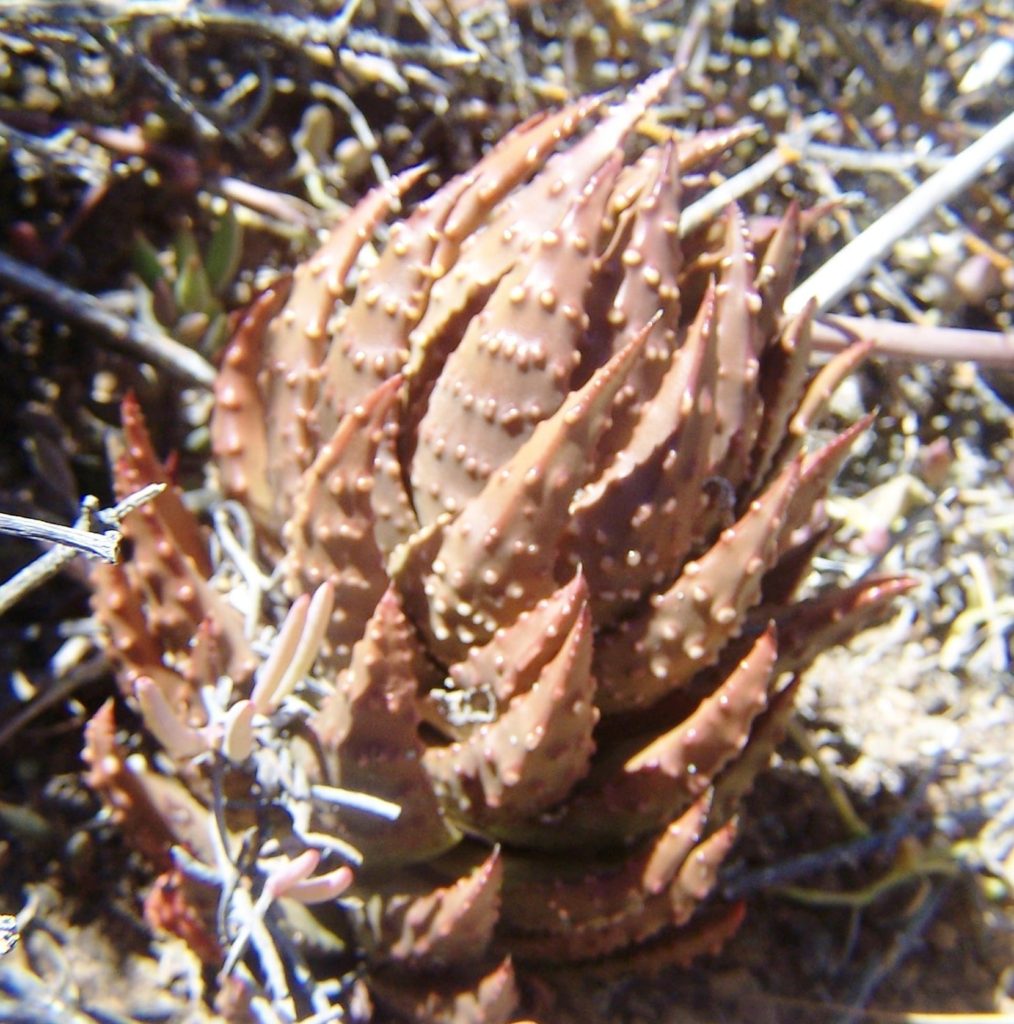
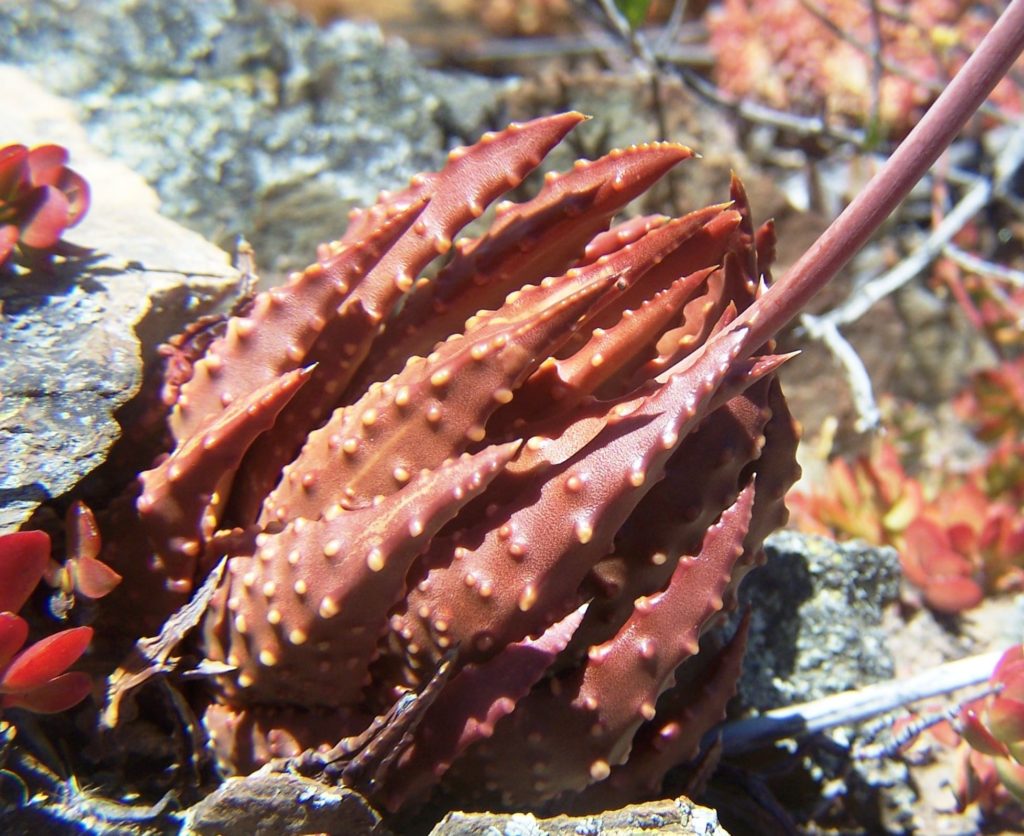
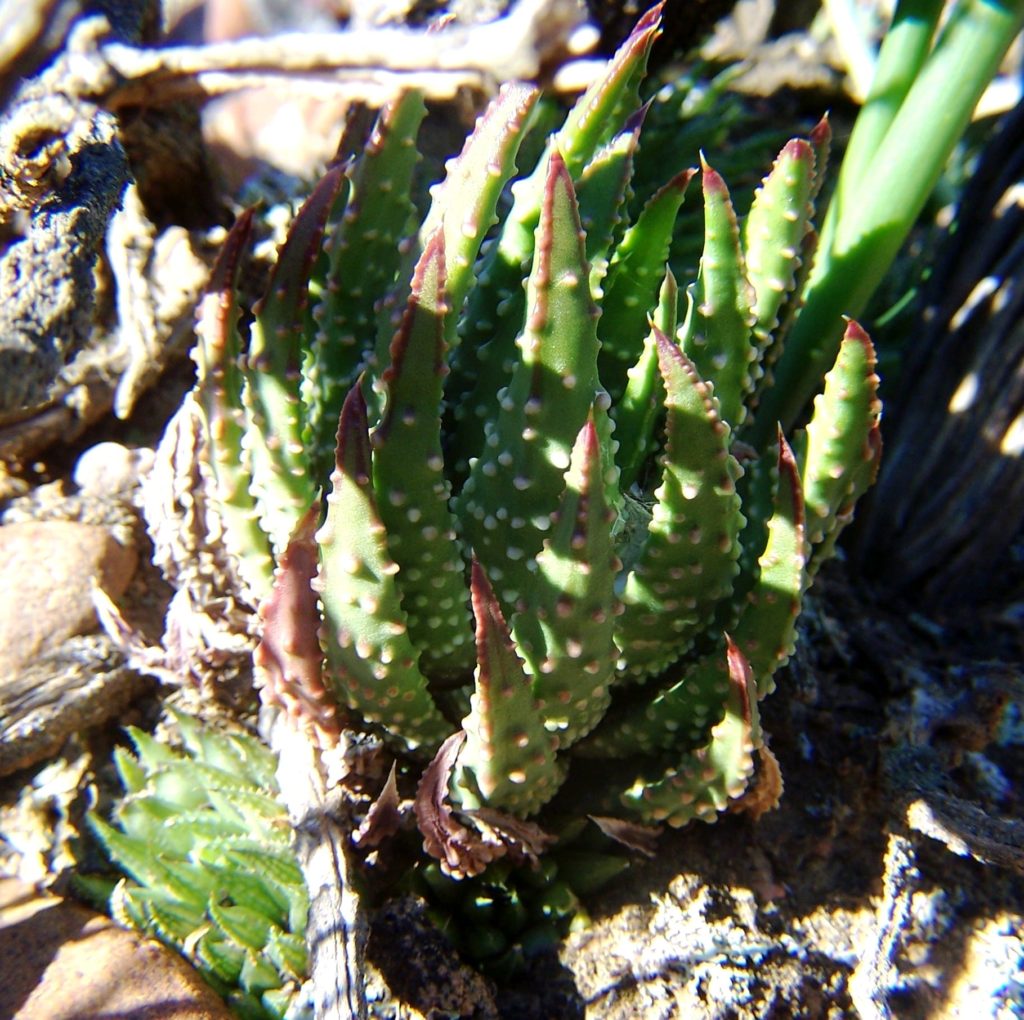
Two plants from very near Lemoenpoort demonstrating the 8 leaf-tier formation of the Fabonacci spiral series. It is usually between 8 and 13 for the species. The single plant is from only the one population I know of where the plants are much smaller and darker, and the leaf tiers are in the 3-5 tier range. In fact when I first came across them I felt a deja vu kind of moment that I was east of Oudtshoorn looking at H. scabra (tuberculata).
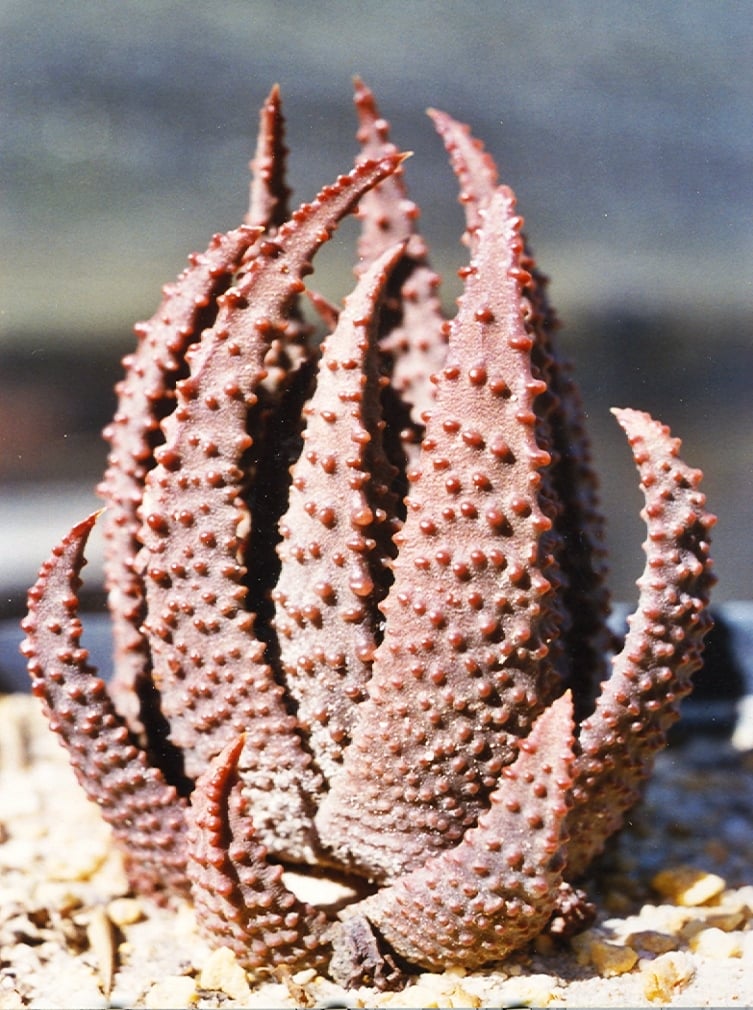
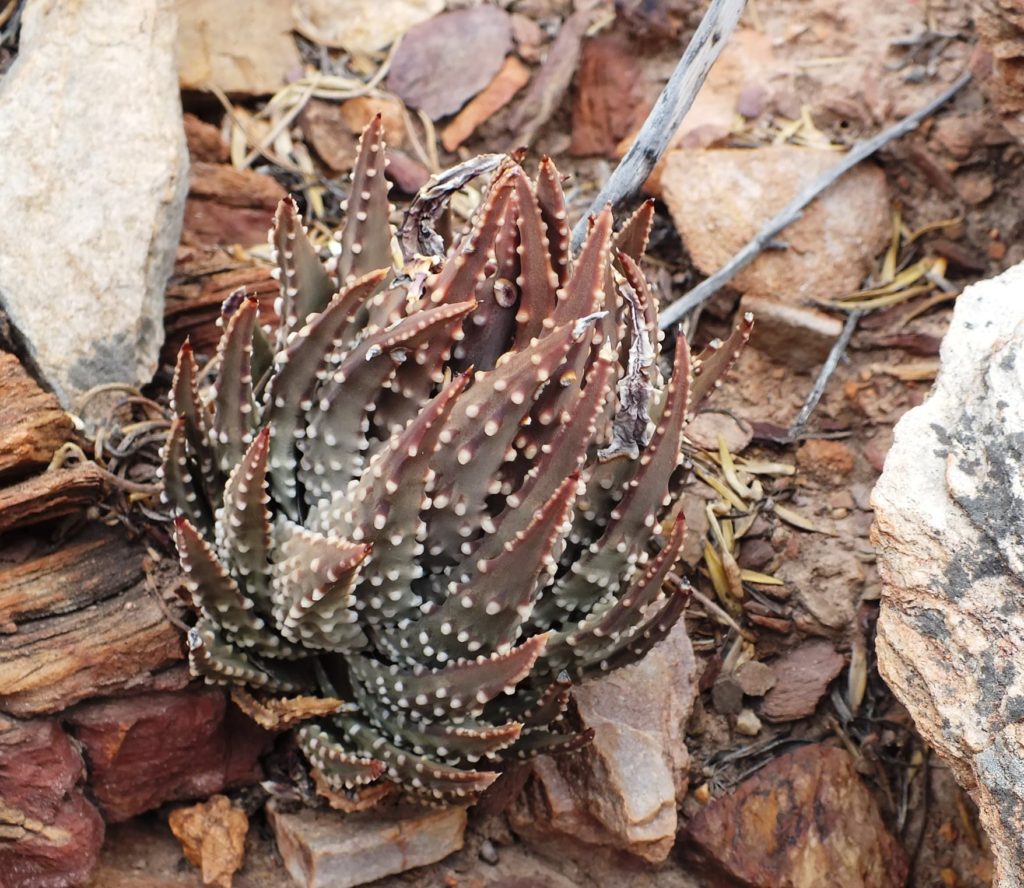
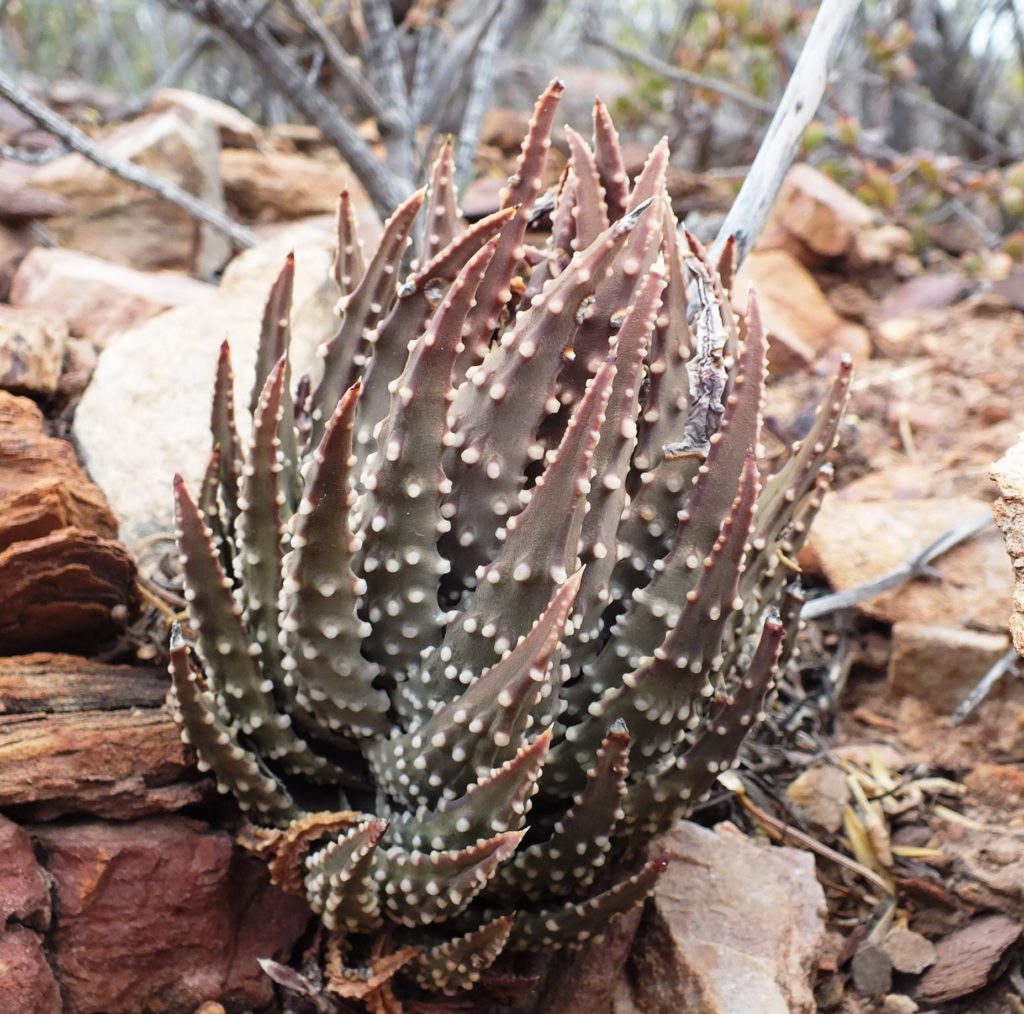
Martin Scott is very knowledgeable and fascinated with Tulista and these are from near where he grew up near Witteberg way to the NE of the distribution of pumila. See one plant dividing. Warwick made some great comment on plant ageing and dividing among other points, but Facebook format tends to tuck such away.

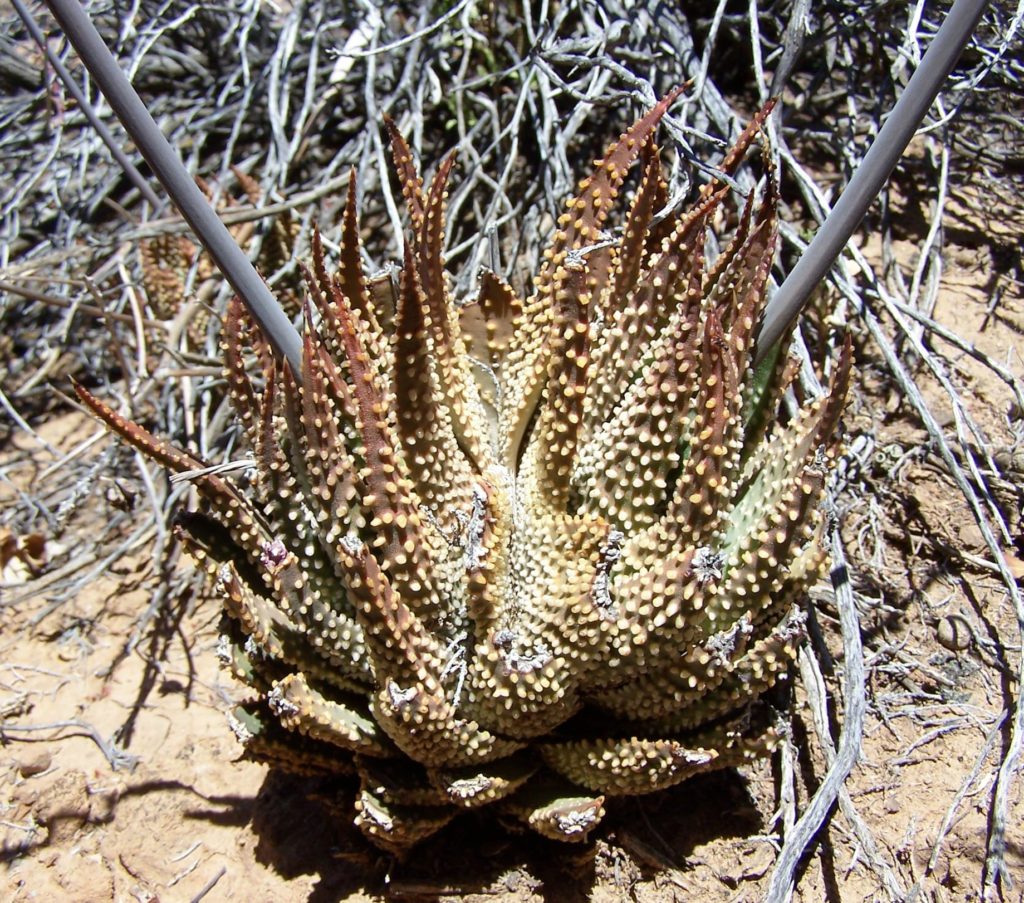
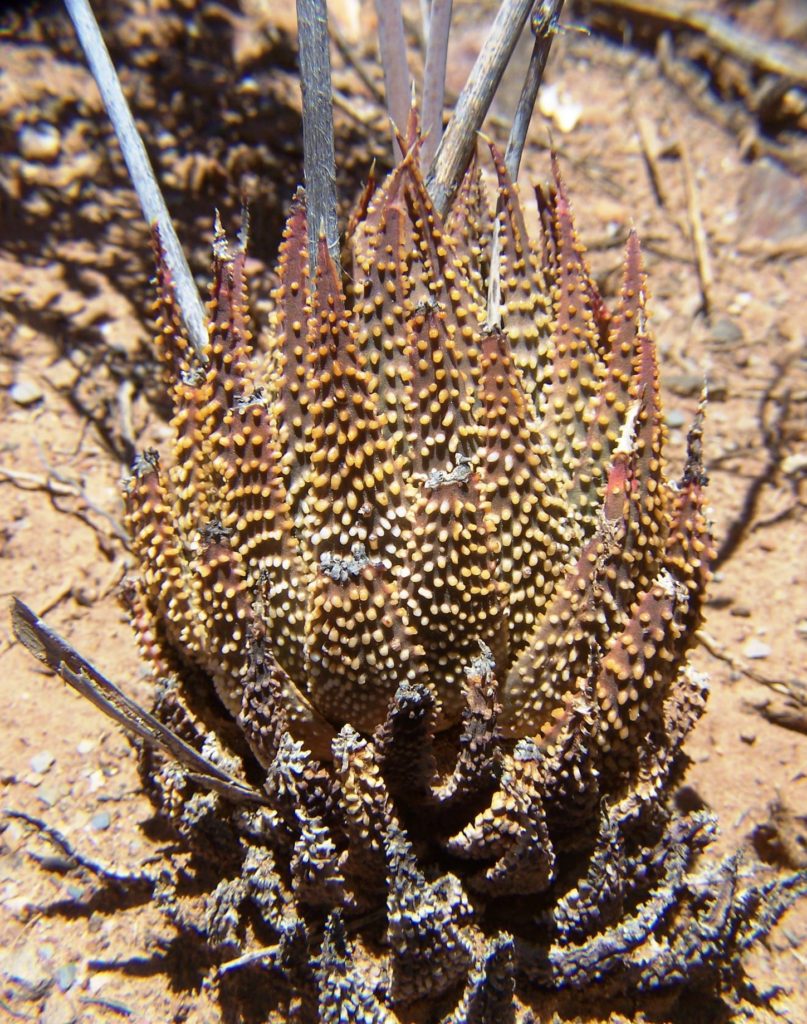

My interest in Haworthia is totally a biocentric one. An anthropocentric interest, touched by the way we are propagandised by science, religion and economics is bound to cause differences and disagreements. These pumila pictures were taken northeast of Stormsvlei but south of the Riviersonderend river. Oh why in this digital era was I so stingy with camera capacity? Could shed tears for so much lost in the celluloid one.
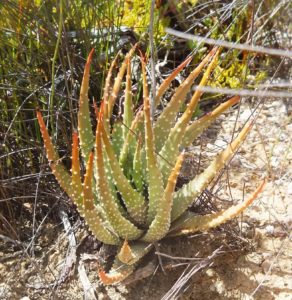
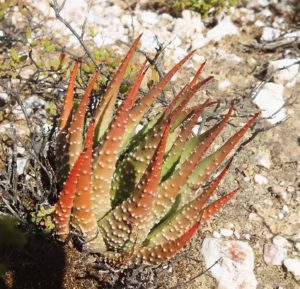


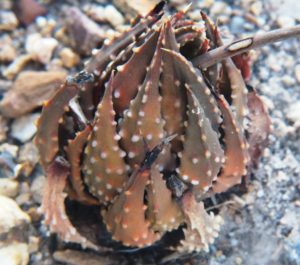
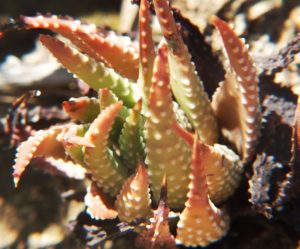
What makes Haworthia including Tulista, so fascinating is the extraordinary local variability. Many more pictures would be needed to display that at this place east of Worcester at the base of the Langeberg.
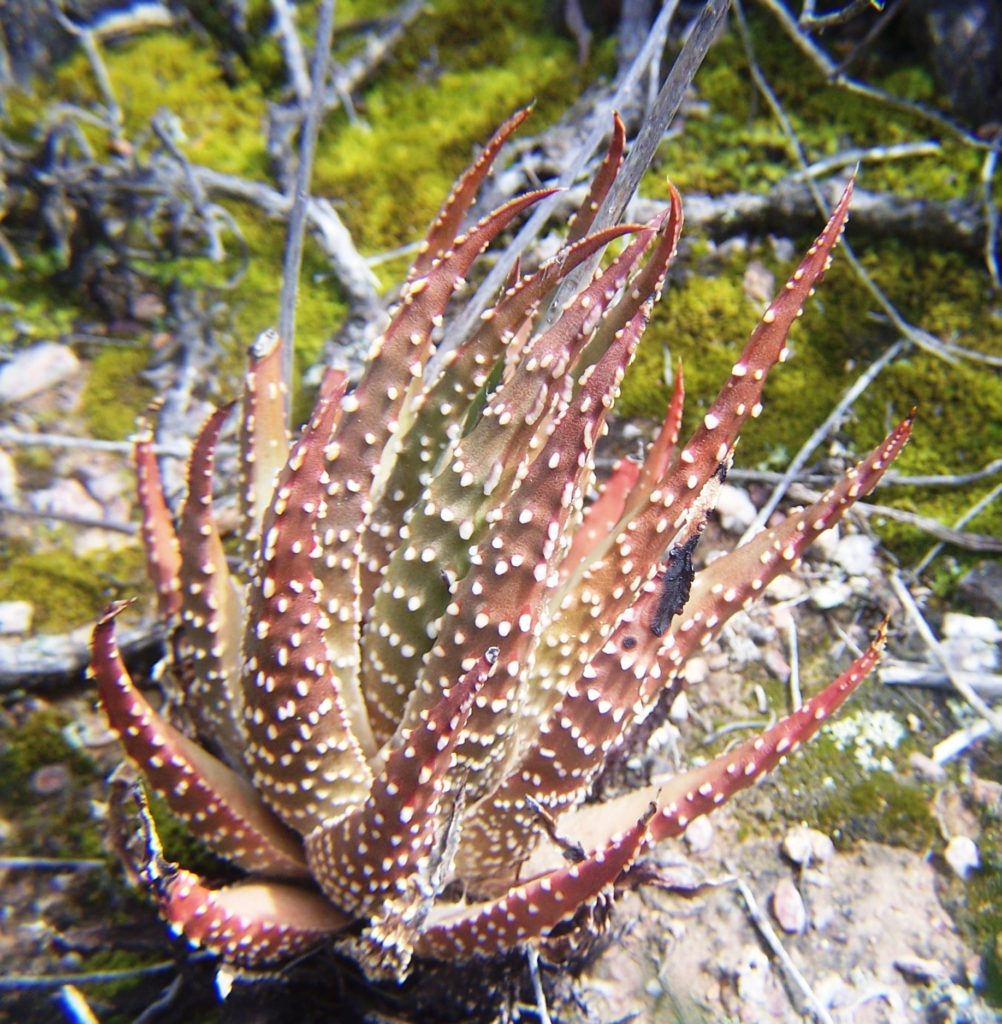
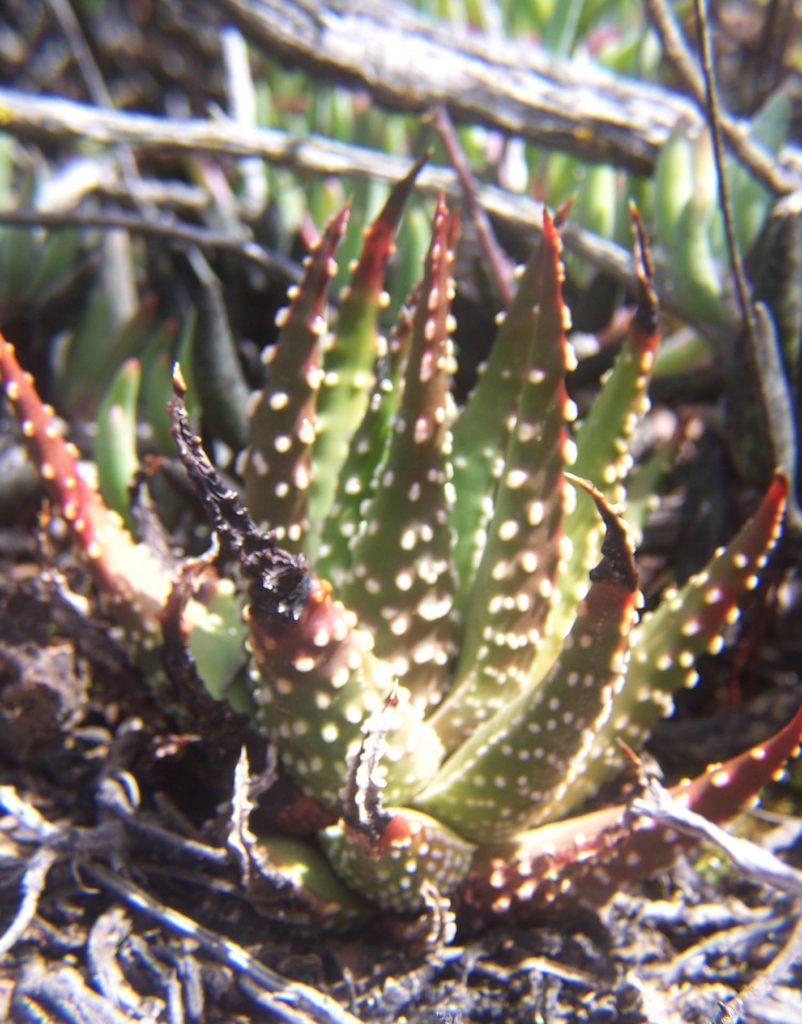
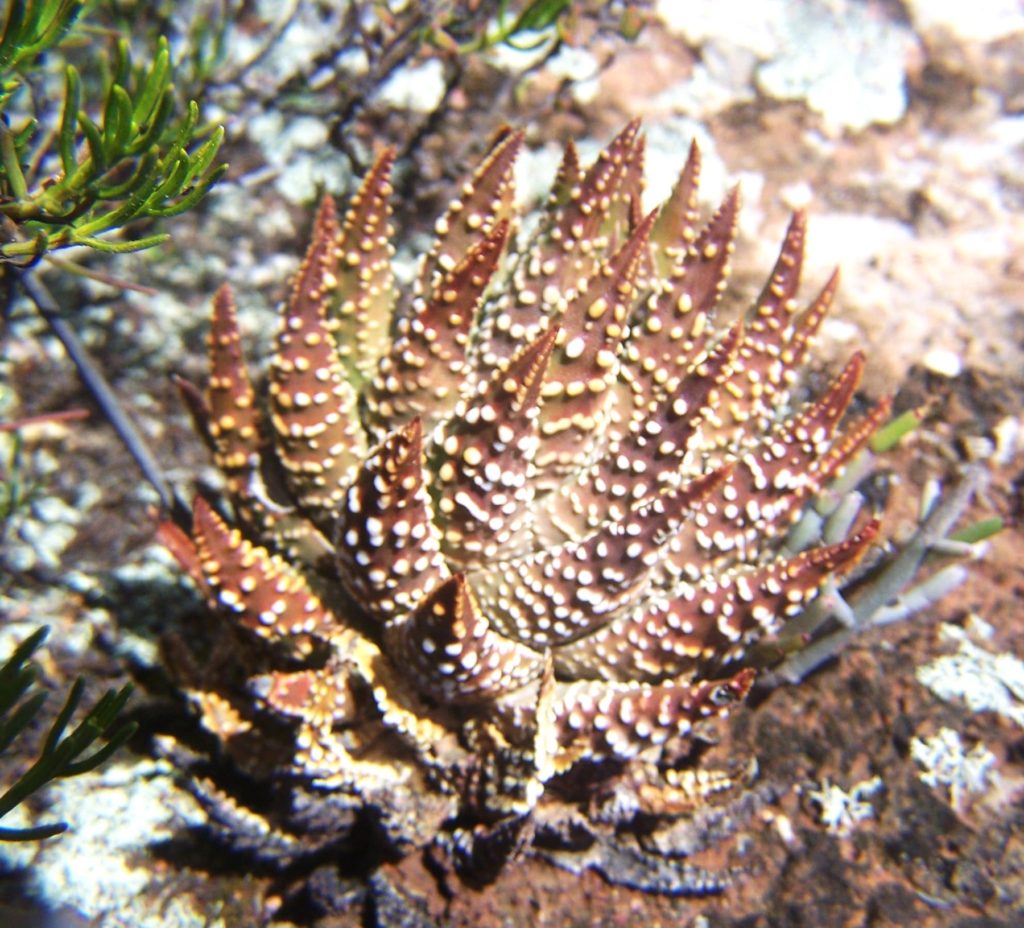
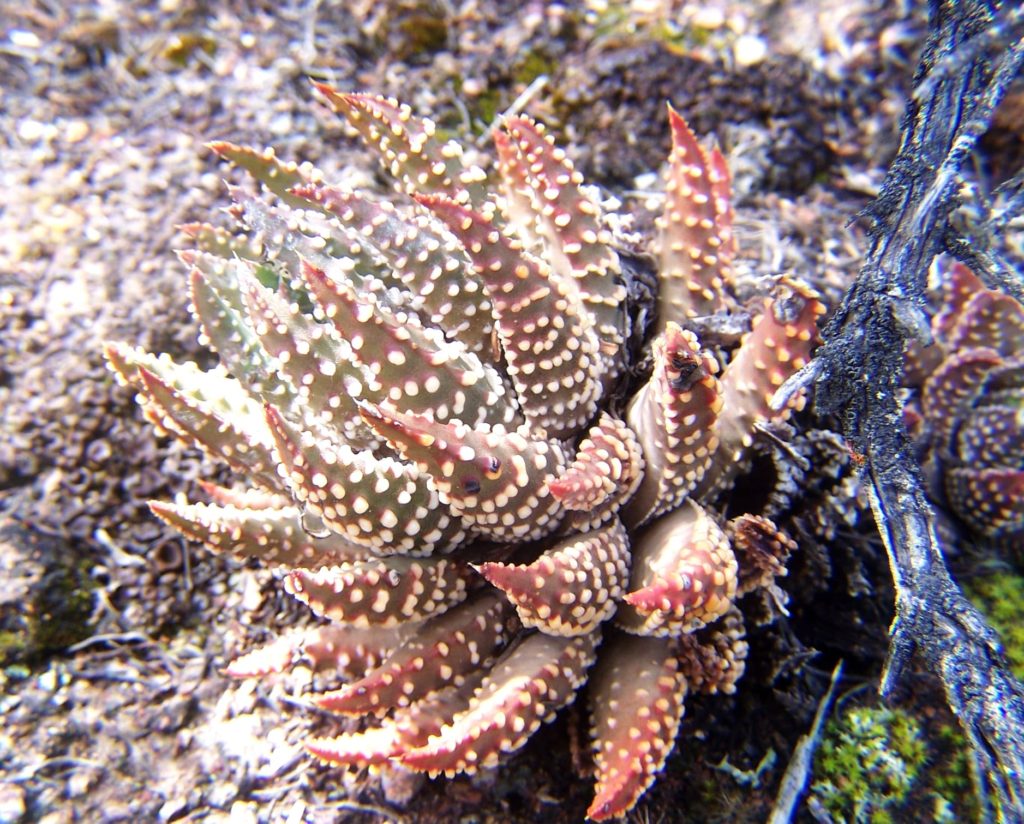

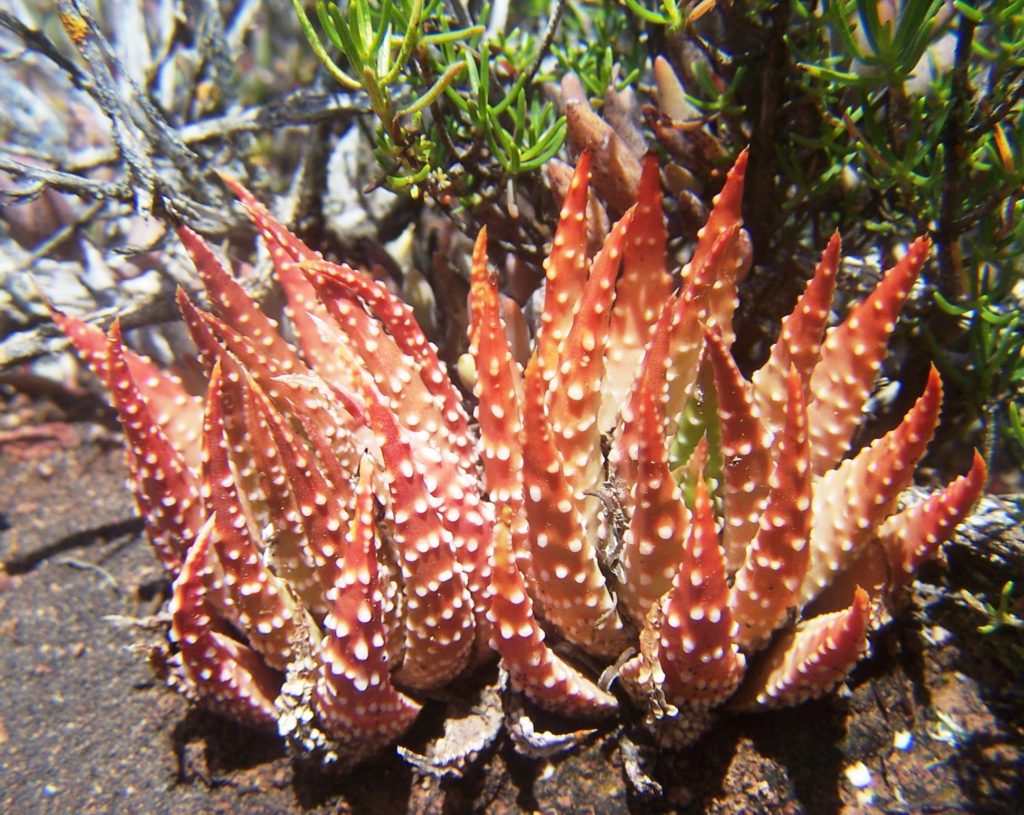
These were photographed virtually within Barrydale and I am sure have now been destroyed. I believe they are a bit further east too, but interestingly there are fertile hybrids with Astroloba corrugata (muricata) about 14km east of Barrydale that suggests a more solid presence.
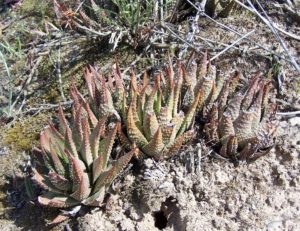
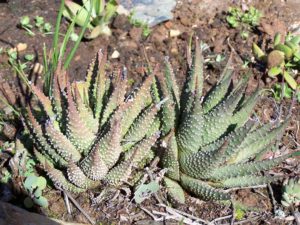

A last picture of pumila taken at Worcester but at probably the most western point of occurrence. The plants were blood red in summer 1970 during a prolonged drought. I went back perhaps 20 years later hoping for the same dramatic colour! Next I am going to go through my T. minima pictures with a great deal of withhold. Someone has found it necessary to change the name to minor. On of those totally unnecessary names justified by virtue signaling a Rafinesque like intent to create an impression. I fear that plant taxonomy is facing a meltdown and the aloids are leading the subject into (further?) disrepute. I will keep touching on “why”.
Fascinating stuff this business about plant classification. Up to about 2000AD there were 4 major systems. The Engler system for Europe, The Bentham Hooker one for England (and Commonwealth), the Tahktajan one for USSR and Cronquist for USA. Since DNA technology, we have the Angiosperm Phyllogeny Group (APG) trying to generate consensus on the basis of a better understanding of evolutionary history. A cursory inquiry suggests there are 13 members/contributors – 2 Swedish, 4 British (Kew 3), 1 Australian, 5 USA and 1 Finnish. On the practical fun side this is Tulista minima at the western most end of the Potberg.
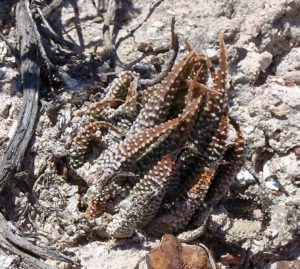
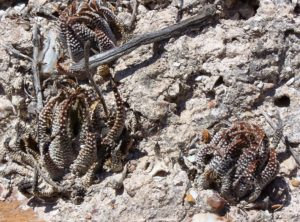
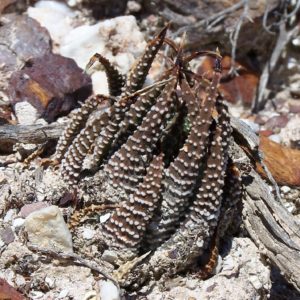
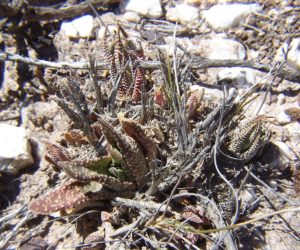
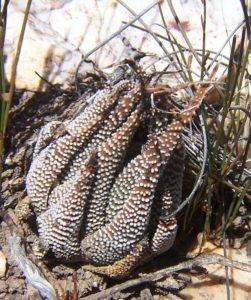
Apart from the four major classification systems there comes the question of national and Independent herbaria and their choices and decisions in respect of whatever system they adopt. For the Aloids, the principals seem to be IOS (International Organisation for Succulent Plant Study), Kew, SANBI (South African National Biodiversity Institute) and Tokyo Institute for Evolutionary Biology? Recently it was said that IOS had overturned the Tulista recognition, but that is not so. IOS never recognised it in the first place. SANBI has adopted a system of classification based on DNA evidence that does not seem to take into adequate account the aloids north of the Limpopo. It has omitted some SA species too. These pics are Tulista minima from the northern Potberg area locality and I have several of those.


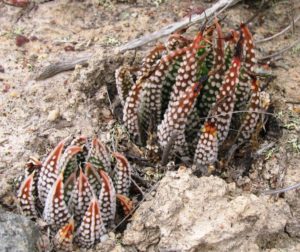
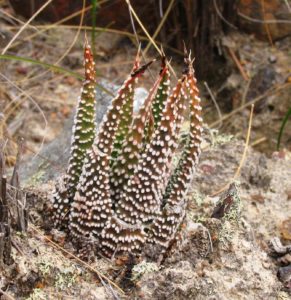
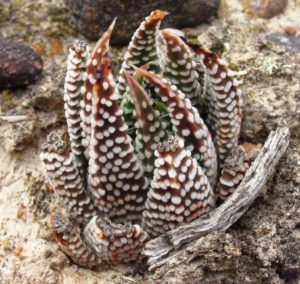
IOS is based on he Zurich botanical garden and has 97 private members. Kew has still to make its presence felt and then of course there is the role of herbaria world wide and a ton of individual interest from all directions. always new ideas and new brooms on the scene. Always a potential Rafinesque, or Resende or an icon of intellectual virtue finding his or her way in the strange world of taxonomy. It is simply a constantly changing scene. It is not science. It is an expression of our view of the world and how we interact with each other? More from the Potberg flats.
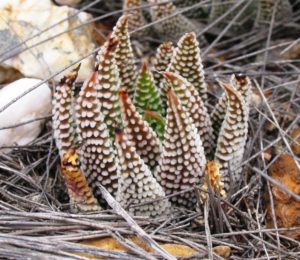
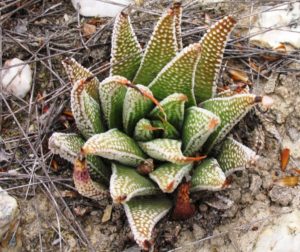
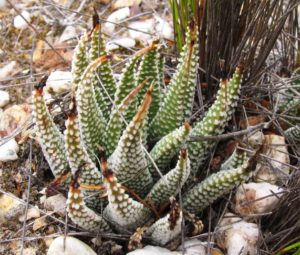
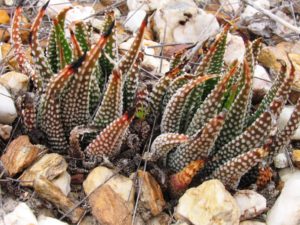
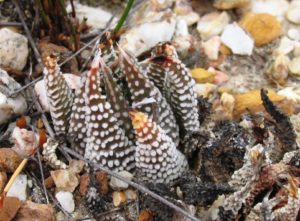
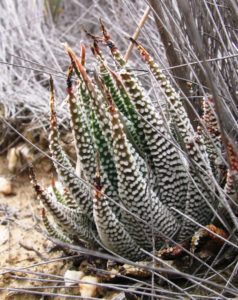
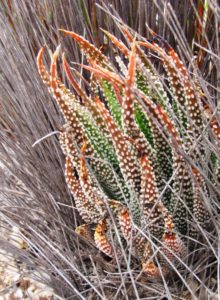
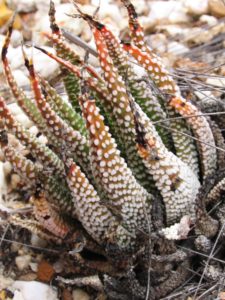
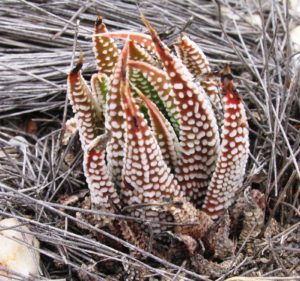
The Aloids are in a bit of a limbo and really caught up in the idiosyncrasy, egocentricity and autocracy of plant taxonomy, nomenclatural rules, institutions and individuals. It is NOT good and the future looks bleak. The path of Haworthia since Linnaeus is laughable if it was not so tragic. I know the last 80 or so years very well and particularly, and intimately, the last 40 years. It has all been a sheer left brain debacle. So it is nice to look at this large T. minima from far SW Heidelberg.
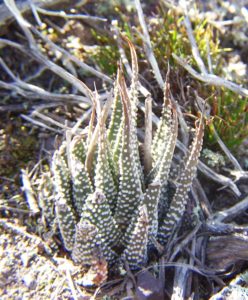
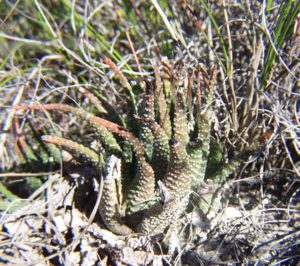
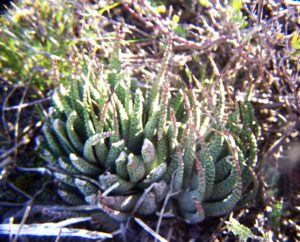
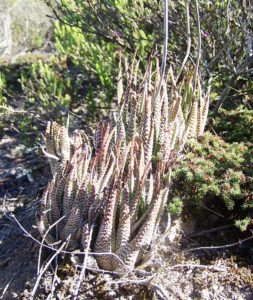
Of course T. minima is characteristically blue-green in colour but in the Bontebok Park we get these. It has got something to do with T. marginata but exactly what. Maybe it has something to do with T. pumila too, or is it even a bigger system that included T. kingiana. There are or were two other populations that are/were similar. It is all well and good tinkering with the nomenclature and using fancy left-brain technology to arrive at some overworked mechanistic outcome, but does it help?
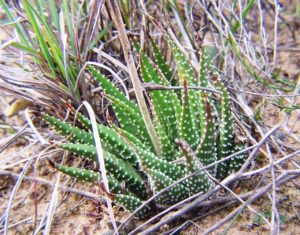

There really is just an unimaginable range of variation even in Tulista where classification does not seem to be controversial. But when he eventually see what Essie feels he has learned from 40 years of field observation, you might begin to ask yourself if our species concepts are inline with reality. I agree with him.

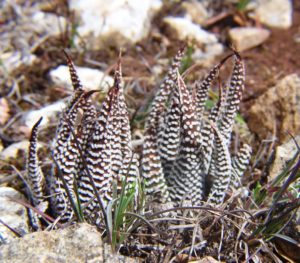
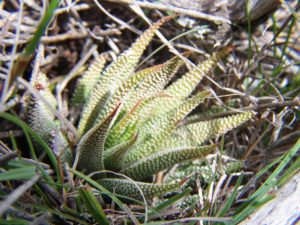
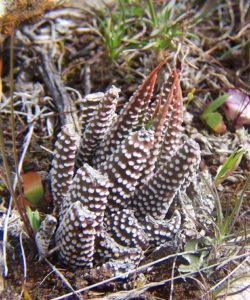
These minima are from west of Riversdale. Taxonomy is practiced much as if one dances the Charleston or Jerusalema while navigating between shops at a mall. Much display but not necessary!
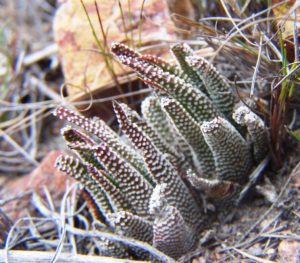
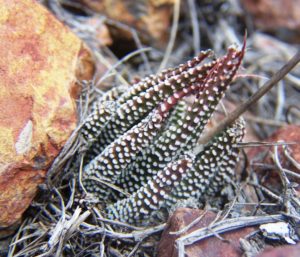

Small Tulista minima from SE Heidelberg. That is Euphorbia tridentata in the first pic with a weird distribution. Its home is actually NE Cape. But I am going to go on about the aberrations of classification and “science”. Sometimes (how often is that?) oddballs/taxonomists/amateurs/novices/experts/wannabees describe or described specimens and not species.
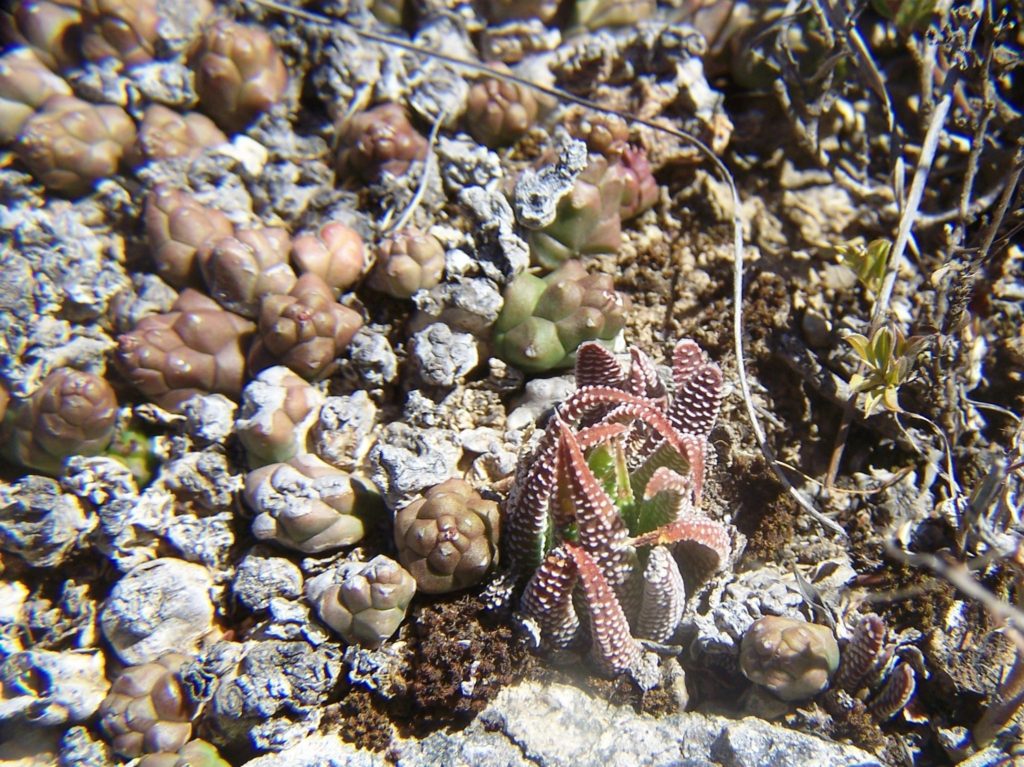
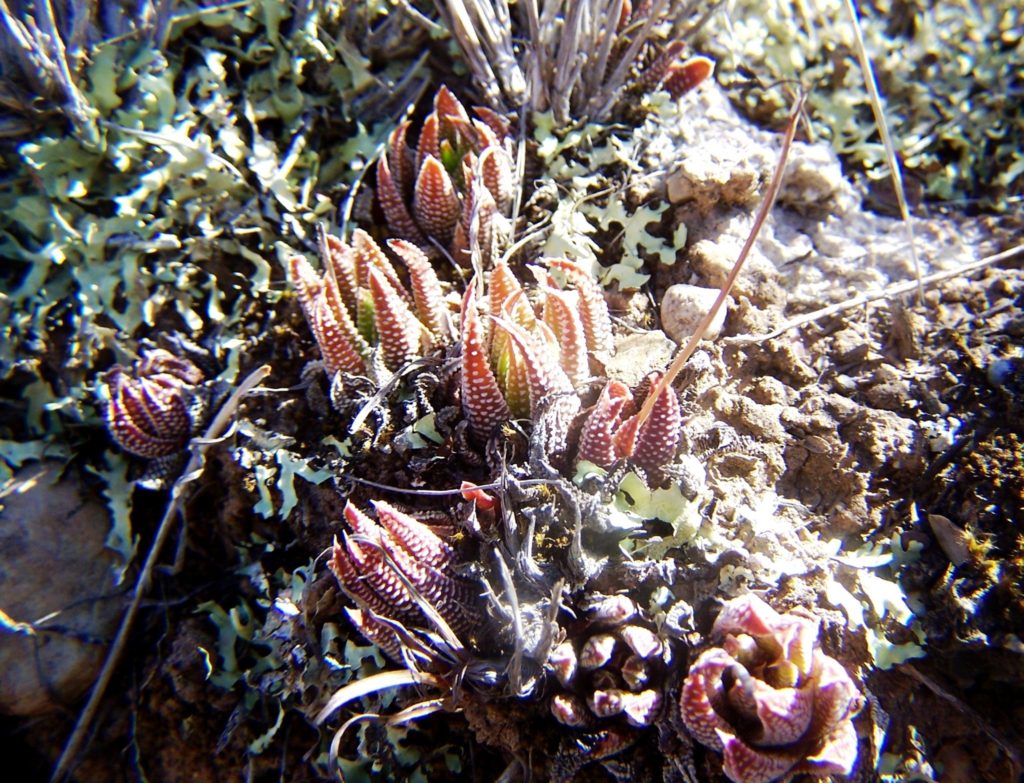
People from all walks of life have been messing with the Aloid genera for the last 70 years to the point that recent events are simply continued absurdity. Despite the stand-off between IOS and SANBI, a new single species (unispecies, monotypic???) genus has been published for Aloe suzannae. To what end? Just what purpose does this serve? It appears that DNA sequencing does not even play a role. Aloe suzannae is reported to be in the Aloidendron clade any way. What about all the species that are not yet covered by the published sequencing data – as suspect as I am sure it is. When will someone who actually knows the aloids recognize that Aloe striatula is wildly odd, as is Aloe haworthioides. Has sequencing really successfully buried all the other questionable genus/species combinations? What does the statement mean concerning the Aloid phyllogram that reads that there does not appear to be evidence of reticulate construction? Trust these Tulista minima will bring some solace or else take an aspirin. Is this ordinary minima in a grassy fire-threatened habitat?
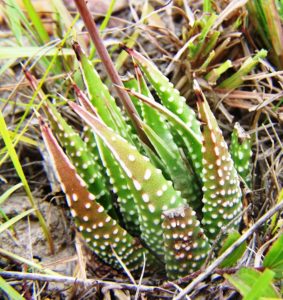

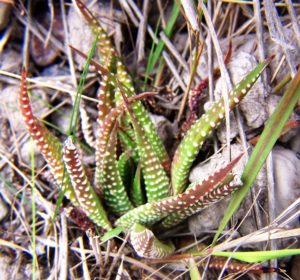
A real life experience. A top ranked taxonomist revising a genus examined the material available to him and identified and described two species. Species X with the four character states A1 B1 C1 D1 and species Y with the alternate states A2 B2 C2 D2. But I was dealing with new living material and none of the plants I saw matched eg. A1 B2 C2 D1, or any other combination PLUS new ones of something like A3 or C5. I wonder if there ever were even the types that reflected the taxonomist’s decision! This has happened to me many times. Not only that – as I learned about Haworthia, I had to change my opinion many times too. More to come about that. But this is a Tulista population very near to T. marginata by about 100m – clearly there are ‘hybrids’. But remember the other green T. minima from about 1km away in the Bontebok Park! I will show more Bontebok park populations and you will begin to see that maybe Tulista is a single system.

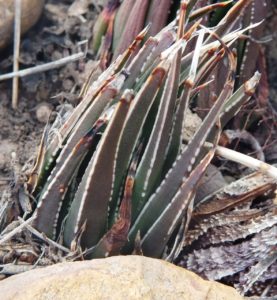
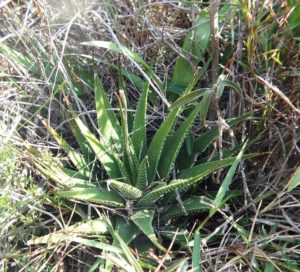



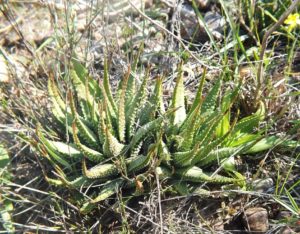


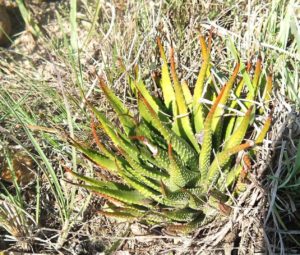
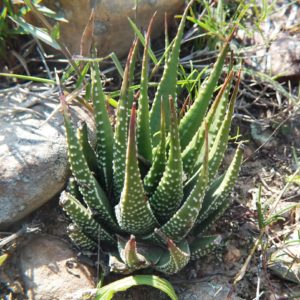
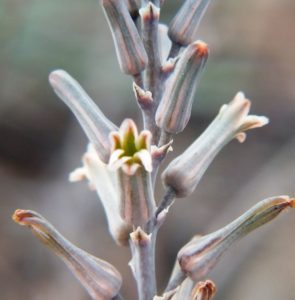
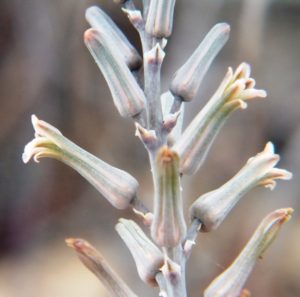
Please note that I have had many of those disconcerting “real life experiences”. There is an astounding level of naiveté among budding taxonomists who really over-reach themselves in the process of expounding what amounts to factually limited real knowledge. Often done in the most complex language. As an entomologist and then as “assistant” at the Karoo Garden, my prime function was identification of field material, visits to the herbarium and contact with “experts”. If I appear cynical, it is with very good reason. These Tulista minima are from several populations along the northern base of the Potberg.
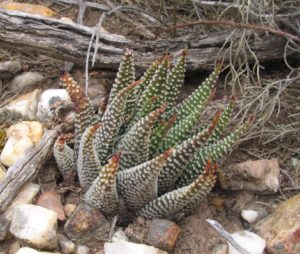



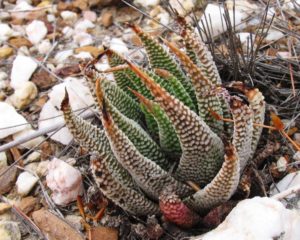
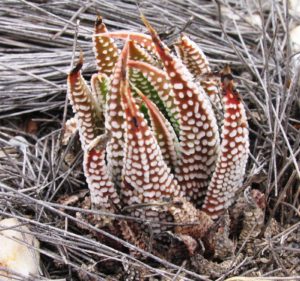
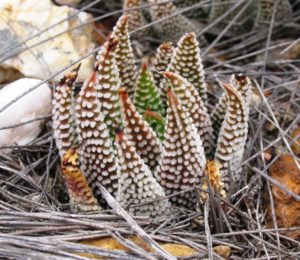

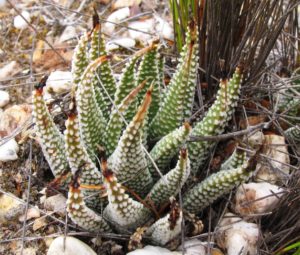
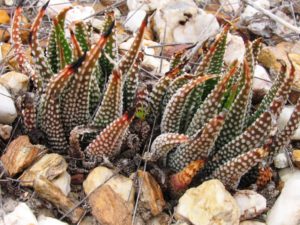
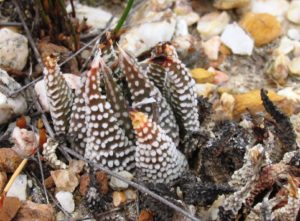
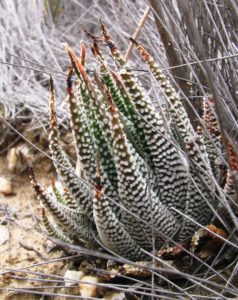
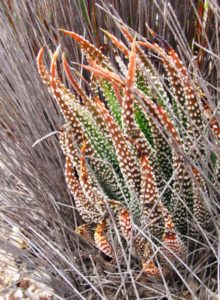
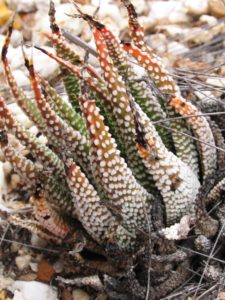
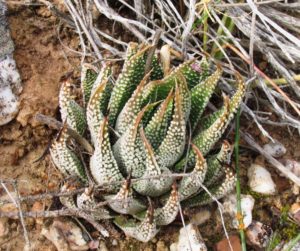
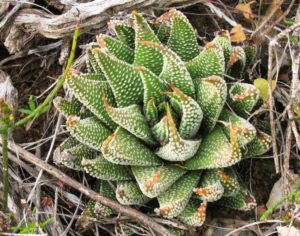
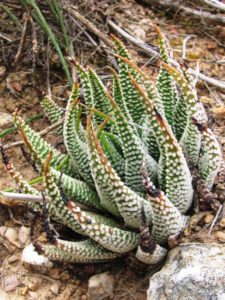
What really distressed me was the problem Larry Leach had in an unending argument with Kew about the validity of a Euphorbia name that Welwitsch had collected and referred to in his notes as “candelabrum”. Kew argued vehemently that Welwitsch had never intended to name it “candelabrum”. What was their motive in resisting the name? Why? They did not like Welwitsch because he had been funded to collect by Kew and ended up selling his collection to another herbarium! Larry’s obituary unkindly reads that he wasted valuable time arguing the issue about the name. This just demonstrates that taxonomic nomenclatural issues are often decided like modern day law suits. The lawyers lose nothing however the cases pan out, and the more appeals the better. Not to forget the food for the obituarist! Let’s go back to another Bontebok park population. Do you think it is possible to categorically state that these are T. minima and not a small pumila?

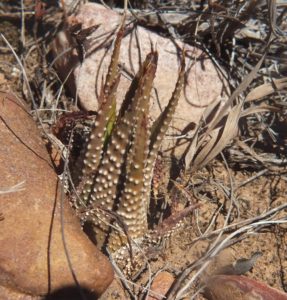

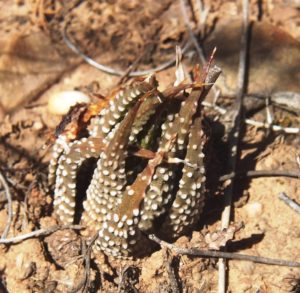
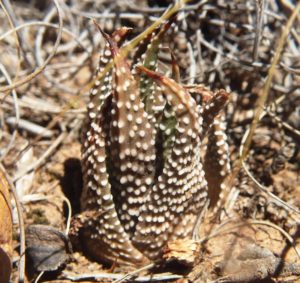

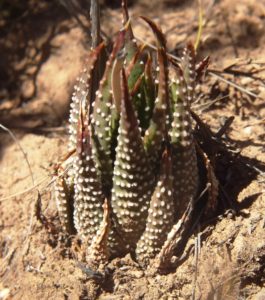

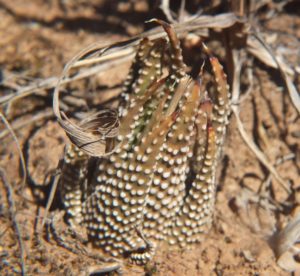
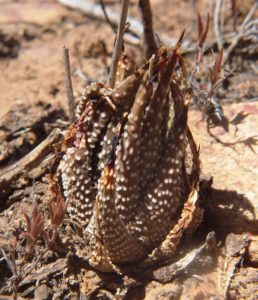
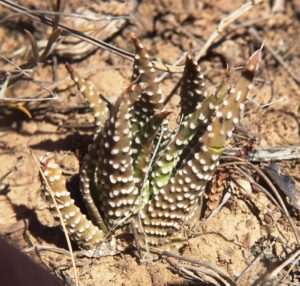


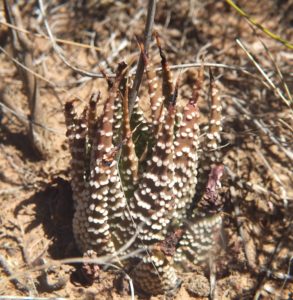
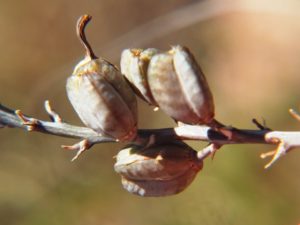
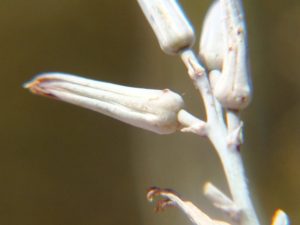
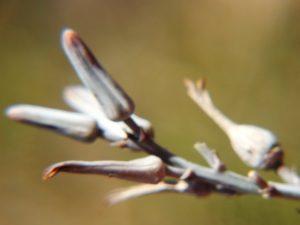
I want to post some more relevant and recent stuff so want to get past Tulista and touch on this nonsense of multivariate analysis and the obfuscation of “science”. This is another Bontebok park population of minima. Very pumila looking but they are smallish and I have many flower pictures to show the pinkish coloration rather than the olivaceous of pumila.
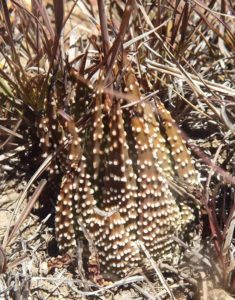


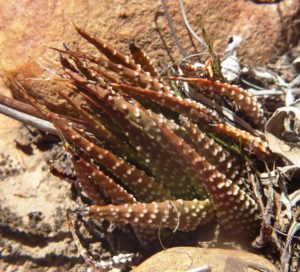
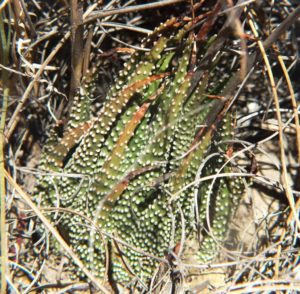
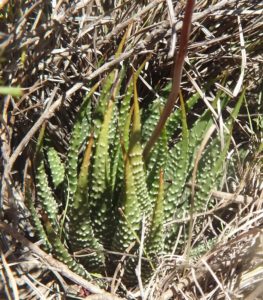
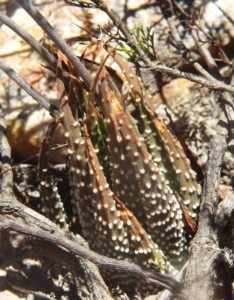

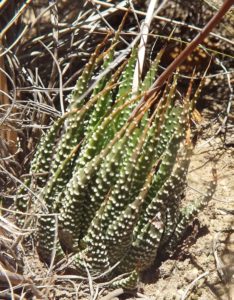
Nearly a meter across. T. minima from S Bredasdorp. Long ago before all the cultivation I came across a similar population of proliferating plants on sandy flats close to the lower Breede River. They were much smaller and compacted together in such enormous clumps.
We struggled a bit to find these minima/marginata plants a few days ago … W. Heidelberg … next is what used to be.
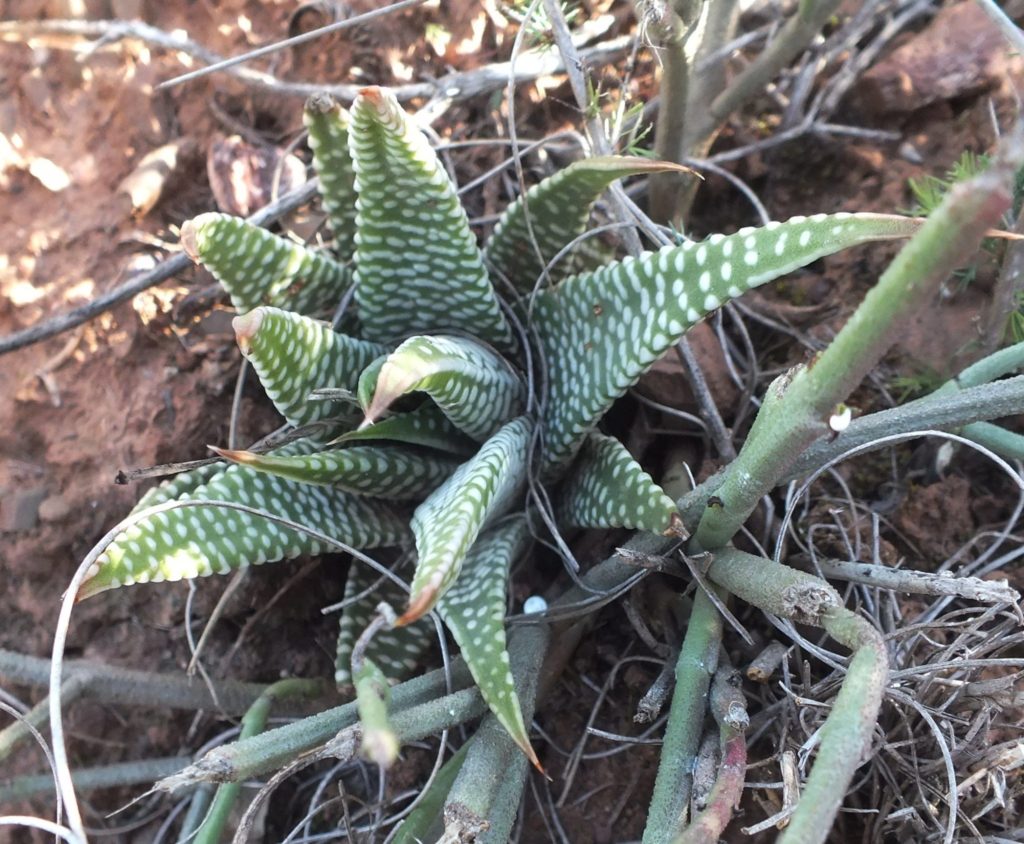

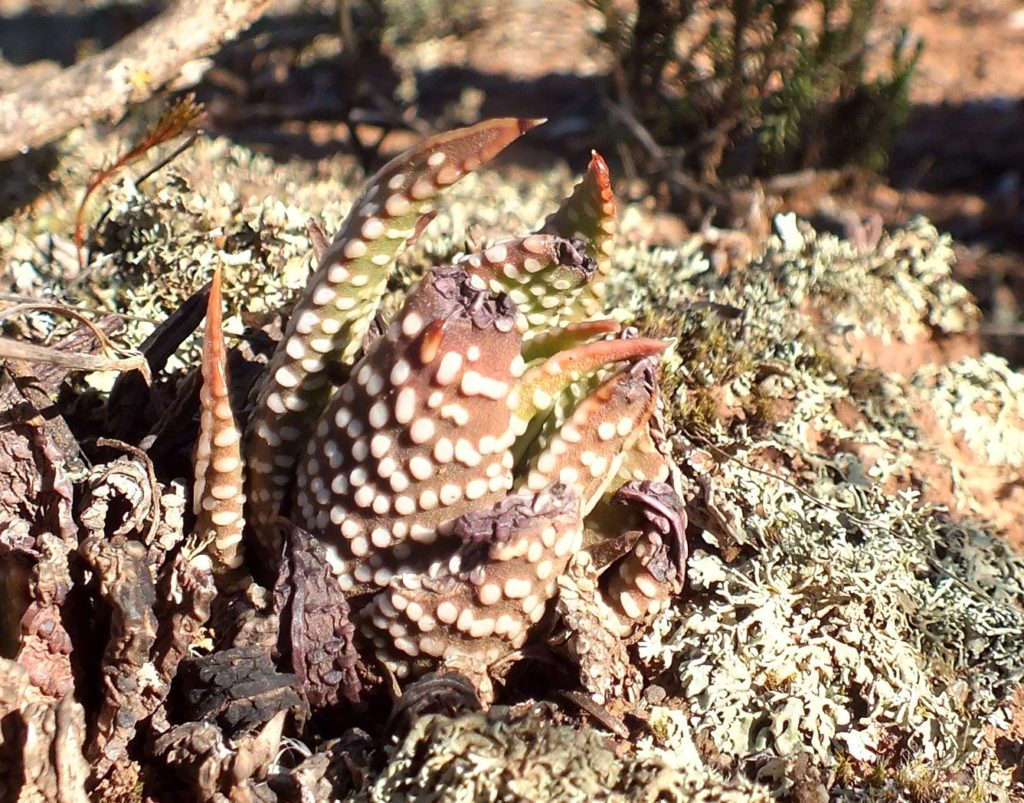
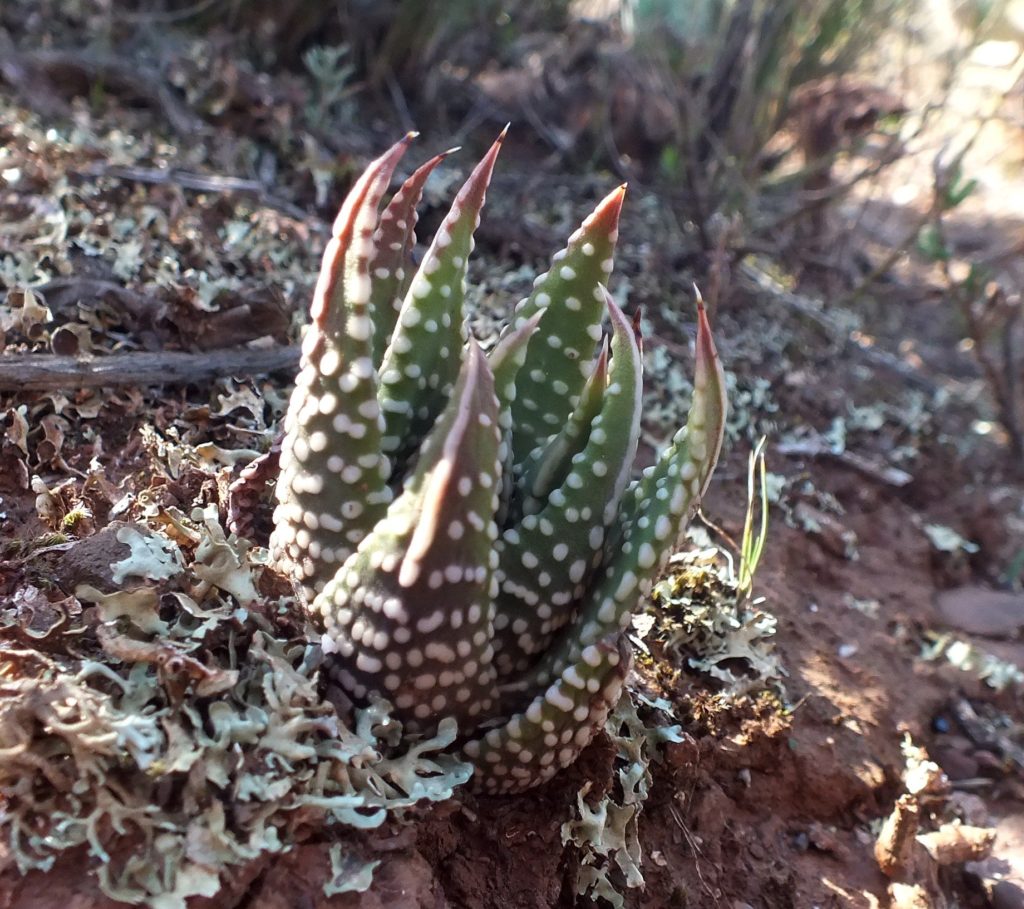
A second (B) population further north also of these minima/marginata confoundments.
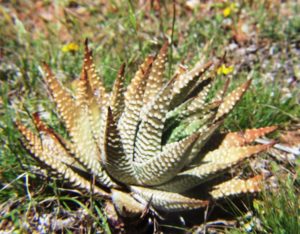
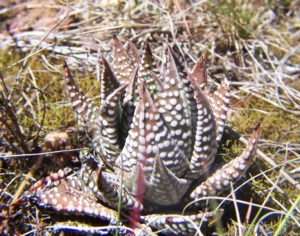

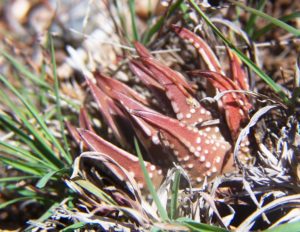
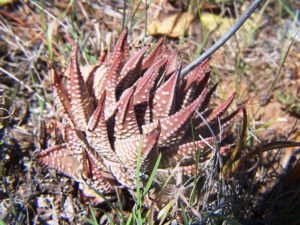
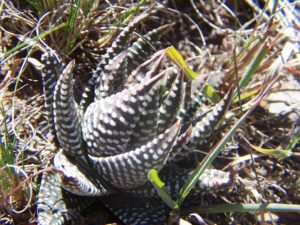
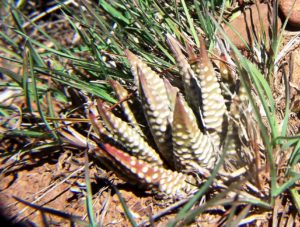
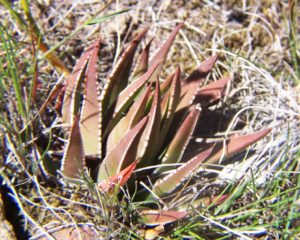
This is A2 when there were many plants at A1. These plants are extremely sensitive to animal hooves!!

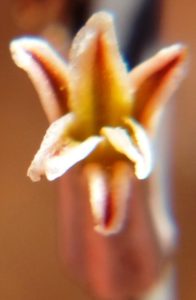


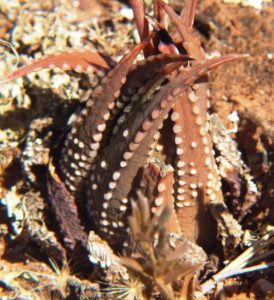
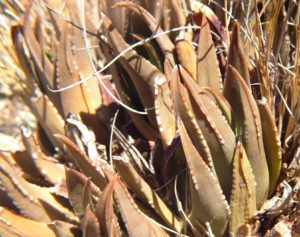
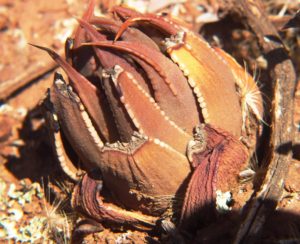
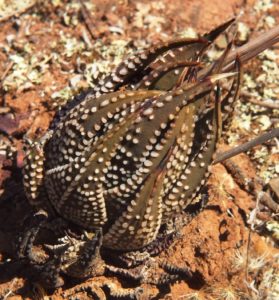
Still further north we find plants like this that we regard as T. marginata – spectacular?
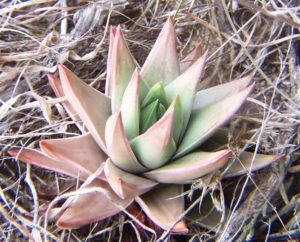

East of Bonnievale are these slender, erect leaved marginata and there are ‘hybrids’ with both pumila and minima – and again the hybrids are not interspersed with supposed parents.
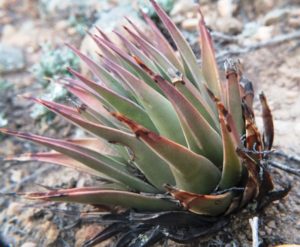
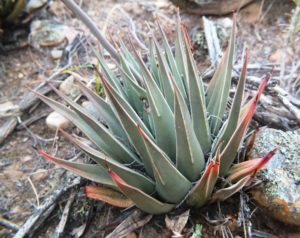
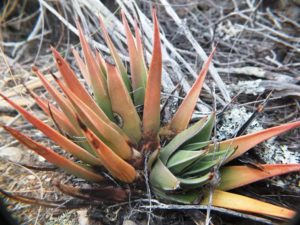
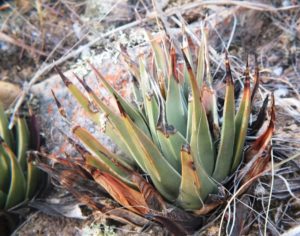
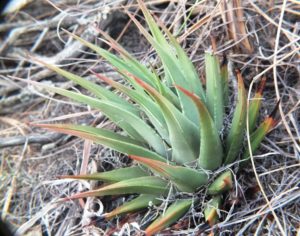

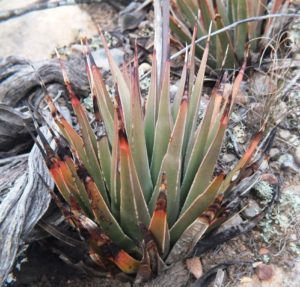
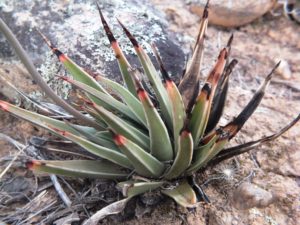
Here are the “pumilaXmarginata” hybrids (as a small, local population)…

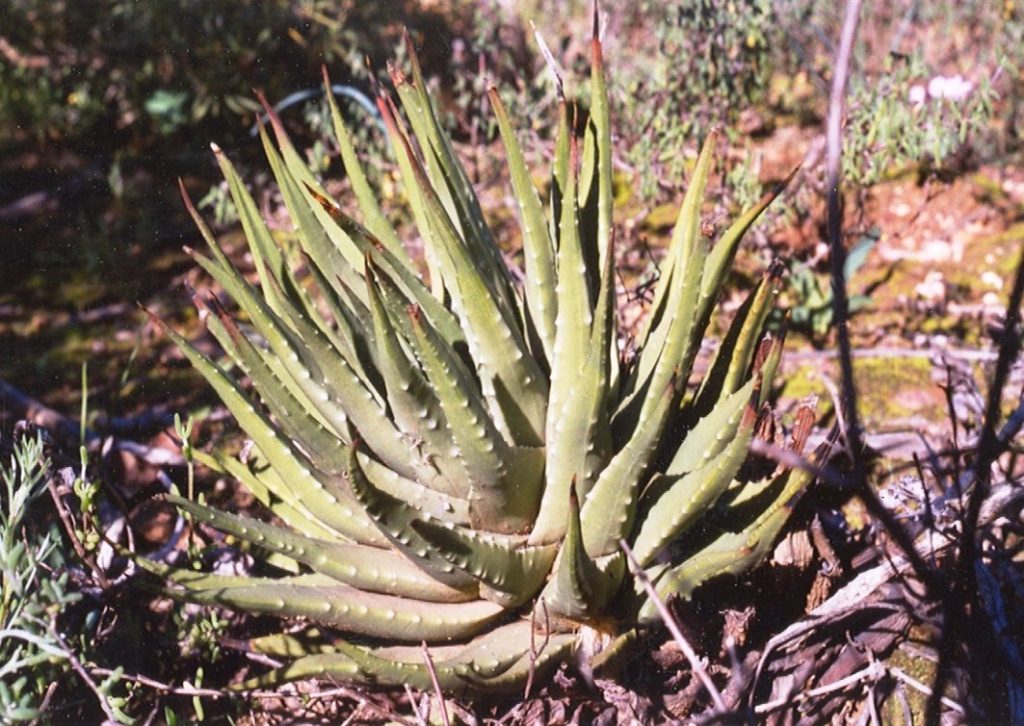
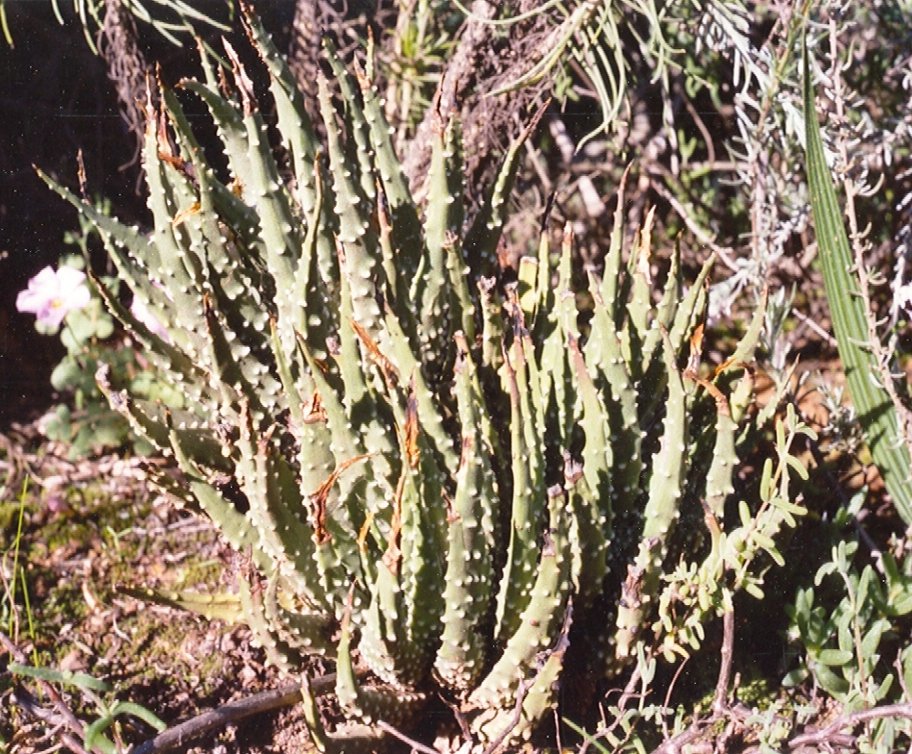
I should have had a lot more photos of this population i.e. marginataXminima? Neither supposed parent was in the immediate vicinity by several hundred yards. The hybrids were fertile and I grew a lot from seed. There is another population of minima westwards by a few km and there too are this time with pumila. Again the hybrids are in a discrete small area away from either supposed parent.
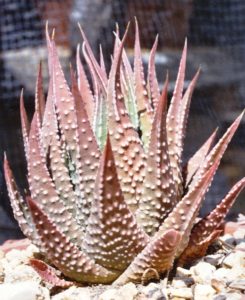

This locality is in Smith’ collecting record. NE Bredasdorp. I struggled to find it until I realised that it was one of the many fatalities of a vandalistic attitude of road builders. In the 1970s they simply ignored any environmental concern and ravaged any surface stone as well. I am not sure if either minima or marginata were in near vicinity but this is the mix and named (in my opinion needlessly) as a discrete species viz mortonii. A few plants do still survive there.


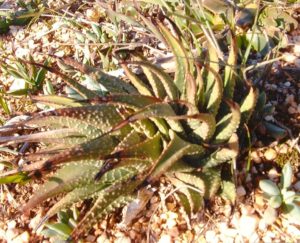
♦



